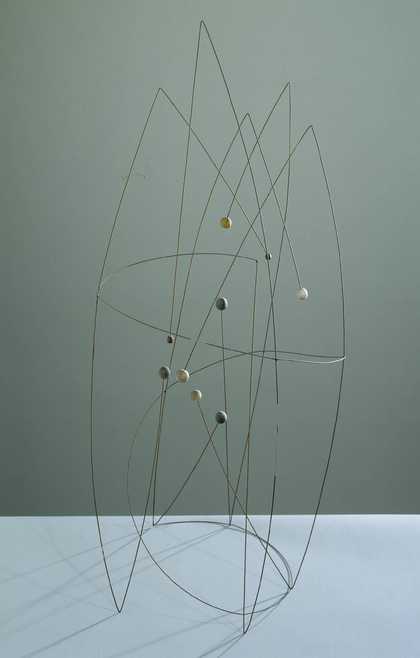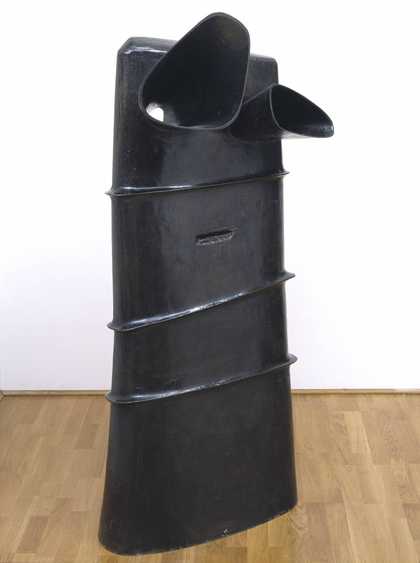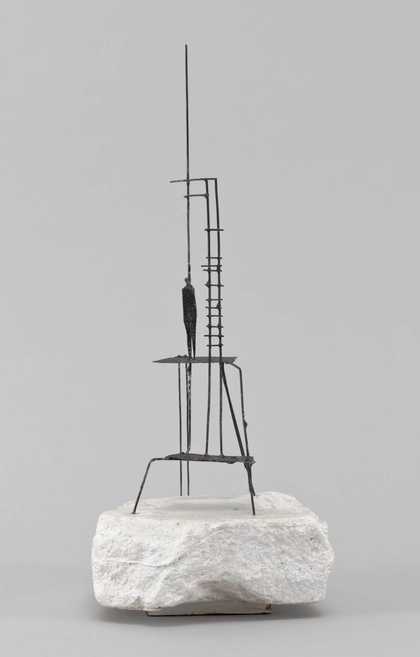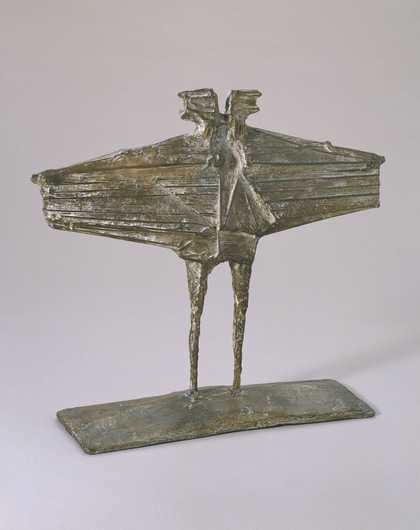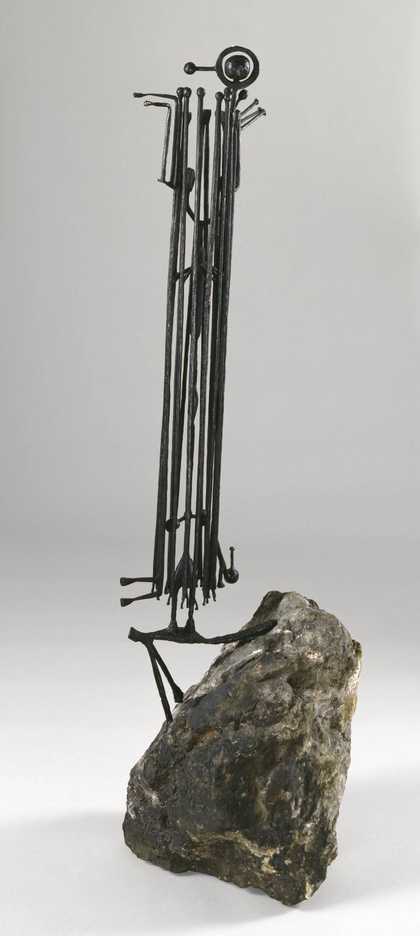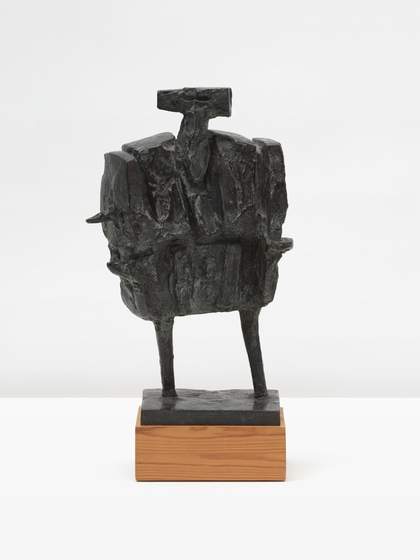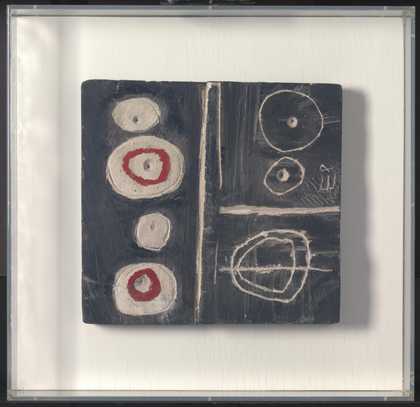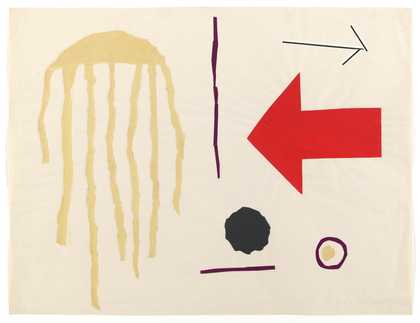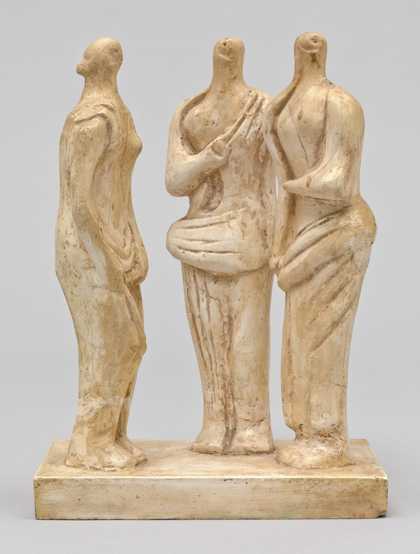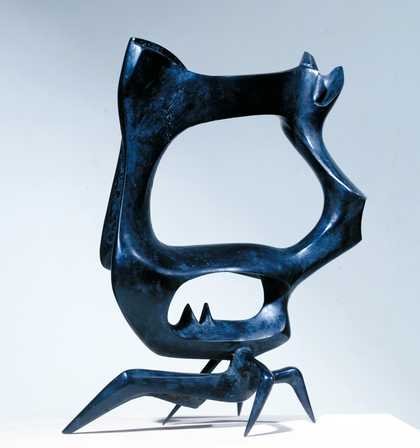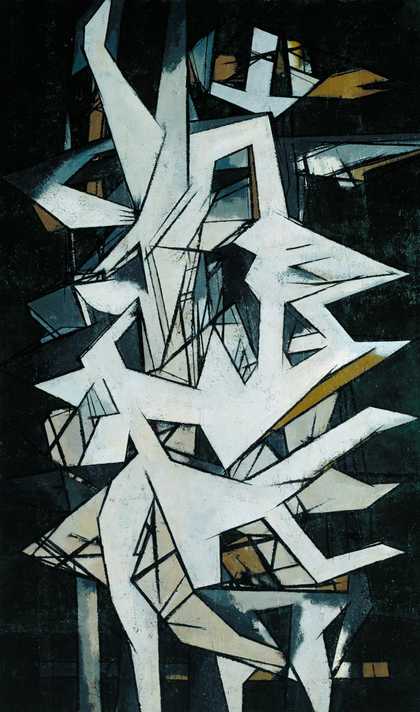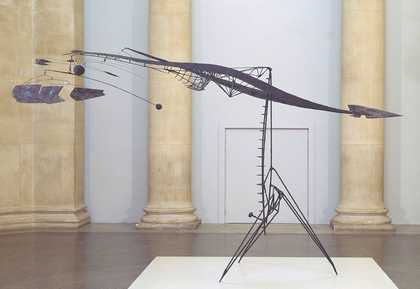
Lynn Chadwick
The Fisheater (1951)
Tate
© The estate of Lynn Chadwick. All Rights Reserved 2020 / Bridgeman Images
Herbert Read used the phrase in a review of the British pavilion at the Venice Biennale of that year. The British contribution was an exhibition of the work of the group of young sculptors that had emerged immediately after the Second World War in the wake of the older Henry Moore. Their work, and that of Moore at that time, was characterised by spiky, alien-looking twisted and tortured figures. They were executed in pitted bronze or welded metal and vividly expressed a range of states of mind and emotions related to the anxieties and fears of the post-war period. The artists were Robert Adams, Kenneth Armitage, Reg Butler, Lynn Chadwick, Geoffrey Clarke, Bernard Meadows, Eduardo Paolozzi and William Turnbull. A sculpture by Moore was outside the pavilion.
Of their work Read wrote:
These new images belong to the iconography of despair, or of defiance; and the more innocent the artist, the more effectively he transmits the collective guilt. Here are images of flight, or ragged claws ‘scuttling across the floors of silent seas’, of excoriated flesh, frustrated sex, the geometry of fear.
The quotation within Read’s text is from the poet T.S. Eliot’s Prufrock. Read’s image of ‘ragged claws “scuttling” may have referred to Meadows’s Black Crab 1952.

